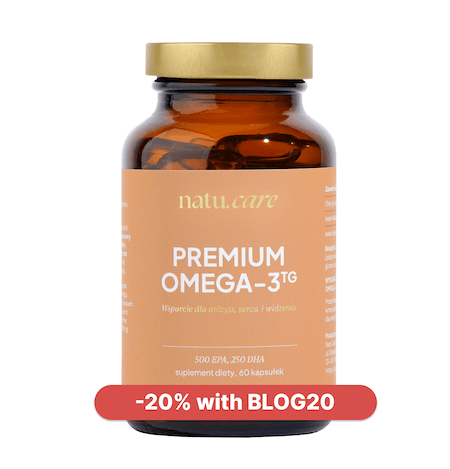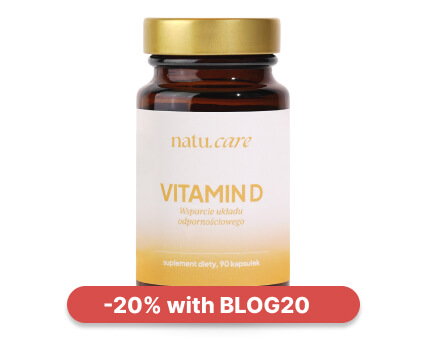Joint pain (arthralgia) - causes, ANA1 testing, treatment
Find out what to do when your joints hurt, what the causes might be and how to treat yourself.


Learn more about our editorial process
.

Learn more about our editorial process
.

Learn more about our editorial process
.

Learn more about our editorial process
.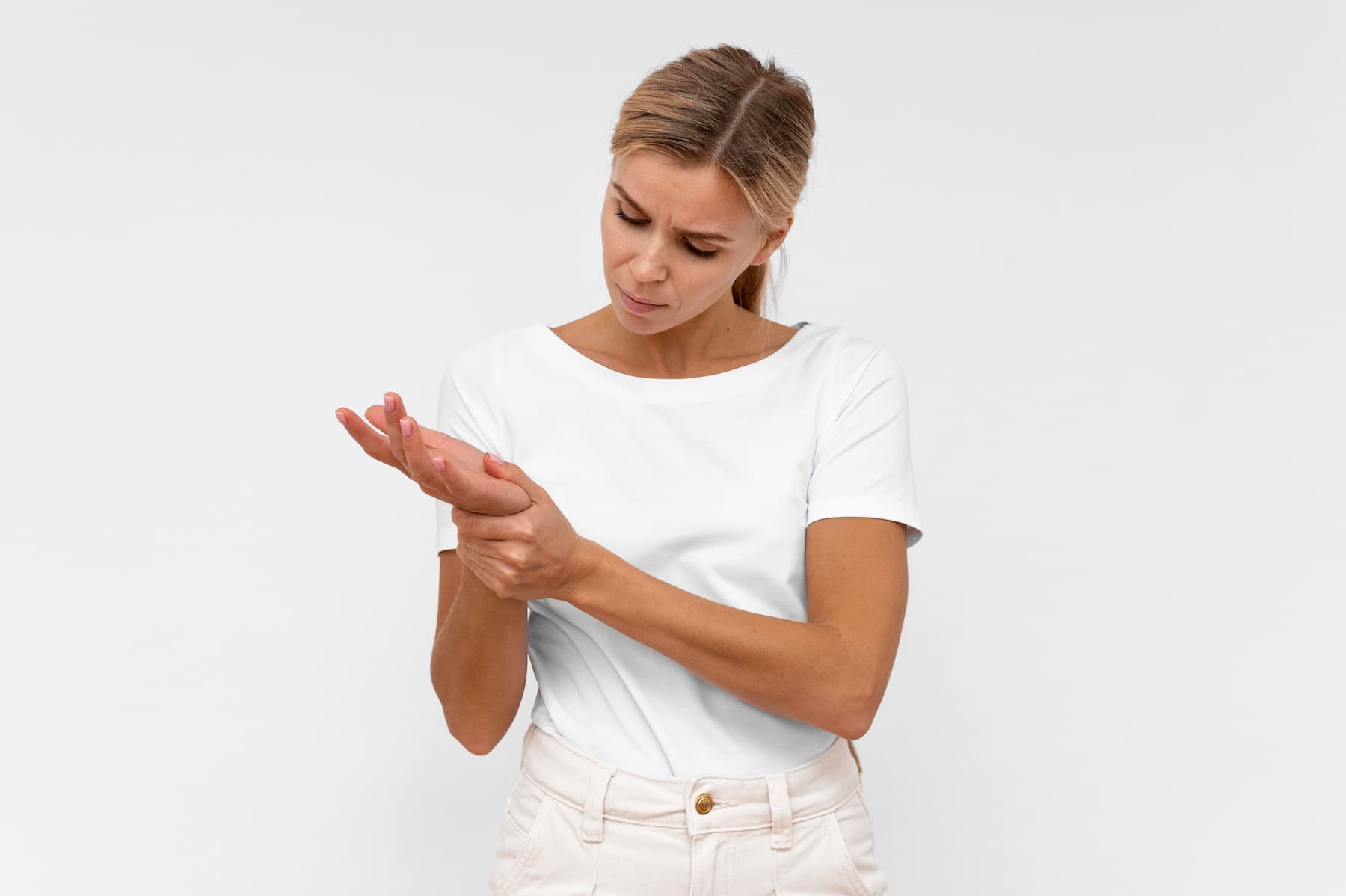
Why you can trust us
Articles on Natu.Care are written based on scientific research, data from government websites and other reliable sources. The texts are written in cooperation with doctors, nutritionists and other health and beauty experts. Articles are reviewed before publication and during significant updates.
.Learn more about our editorial process
.Information about advertisements
Content on Natu.Care may contain links to products from the sale of which we may receive a commission. When creating content, we adhere to high editorial standards and take care to be objective about the products discussed. The presence of affiliate links is not dictated by our partners, and we select the products we review ourselves completely independently.
.Learn more about our terms and Conditions
.Joint pain, otherwise known as arthralgia, affects thousands of people every day. And to treat it effectively, you first need to understand why your joints started to hurt in the first place.
It can have many faces: from stinging to burning to spreading. It reduces the comfort of life and makes daily functioning more difficult and, in extreme cases, can even lead to disability.
It can cause pain in the joints.
With doctor Kacper Nihalani, we break down the causes of joint pain and suggest what information to give to your orthopaedist to get an accurate diagnosis.
.
From this article you will learn:
- What joints are most commonly affected by pain. .
- From what joints can hurt. .
- What information is valuable in making a diagnosis.
- How joints can be treated.
- How joint pain can be treated. .
- How preventive care for the musculoskeletal system looks like. .

Sprawdź, jak może on zadbać o zdrowie Twoich stawów i urodę! Kolagen Premium (10 000 mg) wiśnia -15% z kodem BLOG15
Natu.Care Kolagen Premium 10000 mg, wiśnia
Natu.Care Kolagen Premium dla zdrowia stawów, skóry, paznokci i włosów. Wołowy kolagen w optymalnej dawce 10 000 mg. Przebadany przez niezależne laboratorium.
Sprawdź cenę
Ten kolagen dobrze się rozpuszcza, super smakuje – jak taki soczek wiśniowy. Moje włosy przestały wypadać, są gęstsze i zdrowsze a cera promienna.@Dominika P.
See also:
.
- Knee pain
- Knee crunch
- Gonarthrosis
- Golfer's elbow
- Tennis elbow
- Rheumatoid arthritis (RA) .
- Home remedies for knee pain
- Grandma's ways for joints
Which joints hurt the most?
.
Depending on the cause of the pain, one particular joint, a pair of joints (e.g. knees or elbows), joints on one side of the body or... all of them may be bothered. Whether the pain is affecting a specific site or the whole body can be valuable diagnostic information.
The most common complaints of this part of the musculoskeletal system are:
.
- pain in the joints of the hands and fingers, .
- pain in the joints of the knees, .
- joint pain in the foot, .
When looking at your complaints, it is worth noting the exact location of the joint pain - do you feel it on the inside or outside? This is often a criterion that differentiates between different conditions (e.g. tennis bunion and golfers)and.
Additionally, the complaints accompanying the pain, for example: swelling, fever or joint stiffness, will be helpful information for the specialist. Also pay attention to the circumstances of the pain - does it bother you non-stop? Or is it worse in the morning or only after exercise ?
Causes of joint pain
.
There are indeed many causes of joint pain, so it is not worth diagnosing on your own. The smooth identification of these will determine the implementation of the right treatment to bring you relief. Below you will find information about the most common causes of joint pain. Keep in mind, however, that the catalogue of possible causes is by no means exhaustive.
.
Joints often ache as a result of being overloaded. This can happen to you, for example, when you start a new sport and your body is not used to certain movements. Overloading can also happen to people who work physically or experienced athletes who train very intensively.
One of the most mundane causes of joint and muscle pain is... incorrect posture. Staying in one position for several hours (ah those charms of a sedentary job), on the one hand, and on the other hand, exercising incorrectly (oh, you can hurt yourself). It should be noted, however, that your muscles will start to ache most quickly because of this, but in some cases these symptoms can easily be confused with each otherand.
Sedentary lifestyles and lack of physical activity, and consequently weak muscles, are a simple way to develop joint complaints. Movement stimulates the production of joint fluid and increases joint mobility. When you're active, you're also building up your muscles, which naturally and most effectively stabilise the joint components (orthoses and stabilisers can hide)and.
And if lack of movement and proper workplace ergonomics are not the cause, we are already entering the realm of illness and injury...
Viral and bacterial infections
.
You feel uncomfortable in the evening, and in the morning you open your eyes and cannot get out of bed. Joint and muscle pains are a fairly typical symptom flu virus. They are also usually accompanied by fever and a general feeling of discomfortand.
Joint pain can also occur during an infection COVID-19, especially if accompanied by a dry cough. With symptoms like these, it's worth signing up for a medical teleportation. A specialist can refer you for tests to detect the virusand.
Another of the diseases that can manifest as joint pain is angina. It is caused by the bacteria Streptococcus pyogenes. It most commonly affects children and adolescents; adults suffer from it relatively rarely. Its typical signs are high fever (often above 38°C), no cough and enlarged tonsils and cervical lymph nodesand.
Joint pain can also occur with boreliosis. This is a multisystemic, dangerous, zoonotic disease that can be contracted through a tick bite. Its characteristic symptom is a migrating erythema, which takes the shape of a red ring with a pale centre. However, this skin lesion does not occur in all infectedand.
.
In the course of this disease, arthritis often develops, resulting in pain. So if you find this parasite on your skin, remove it as soon as possible and observe the bitten area closely. If you notice erythema or other worrying symptoms, see your doctor immediatelyand.
.
Test the tick
.A tick that bites you or your loved ones can be sent for free testing for the bacteria (spirochetes) that cause Lyme disease. The condition? You have to provide the parasite up to 3 days after the bite and fill in two questionnaires - one just after the bite and one after 8 weeks. You will get the result for the presence of bacteria after about 10 days. Such services are provided by the Department of Parasitology of the Faculty of Biology at the University of Warsawand. More details can be found on their website.
.
Injuries
.
If you take a spectacular fall off your bike or while skiing and your knee or elbow starts to hurt, you are unlikely to be in any doubt as to the cause of the pain. However, sometimes injuries can be more tricky. There are times when joint pain from an injury will occur when you stand poorly, lift or grab something heavy or simply trip.
Sometimes in such cases it will hurt and stop. For a while. Because after a few hours, or sometimes even the next day, the pain begins, which can be difficult to relate to the injury.
The pain is not as bad as it used to be.
Joint injuries are usually accompanied by swelling. Often there is also a haematoma. In most cases, with injuries the pain is sudden and sharp. Characteristically, you may also hear a snap or crunch at the time of the accidentand.
To this day, my skin suffers when I recall the sound that accompanied the rupture of the joint capsules on an unlucky ankle sprain...
.
Some injuries may carry with them the need to attend the nearest ED (Hospital Emergency Department).
Go to hospital immediately if:
.
- .
- the pain is incapacitating (you get faint or dark before your eyes), .
- the limb does not line up properly (it is bent in a strange way), .
- you cannot move your arm or leg, .
- the area of injury swells quickly and significantly, .
- there has been a break in the continuity of the skin (when the wound is deep or its edges have spread), .
What is the ED used for?
.The Hospital Emergency Department is the place where emergency care is provided. It is where people go after accidents, heart attacks and other serious medical conditions. If you fell down while walking your dog a week ago and your wrist hurts, this really isn't the best place to go (yes, such delivers happen in the ED too). With such an injury, go to a specialist at an outpatient clinic.
Degeneration
.
One of the most common causes of joint pain in people over 50 is arthritis. These form as a result of the production of joint lubricant decreasing with age, which leads to the degradation of joint cartilage. When the cartilage wears away, the surfaces of the bones begin to rub against each other and are destroyedand.
As a result of this destruction, there is an overbuilding of bone tissue - new blood vessels form in the bone and cells multiply in excessive numbers. Osteophytes are formed, i.e. beaks and bony protrusions on the joint surface. These make movement difficult and often cause painand.
Rheumatic diseases
.
Rheumatic diseases are a group of conditions with an autoimmune basis, which is when the body starts attacking its own tissues. The exact causes of autoimmune diseases are not yet known, but it is known that they are based on a malfunction of the immune system. It treats healthy cells in the body as if they were damaged versions or pathogensand.
One of the most common autoimmune diseases that causes joint pain is rheumatoid arthritis (RA). Other examples include psoriatic arthritis or rheumatic feverand.
Rheumatic diseases, although they can mainly manifest as joint and muscle pain, are often multi-system ailments. This means that they can also affect other organs - such as the lungs, heart or kidneysand.
Gouturitic gout
.
Goutaine gout is also a rheumatic disease. Although at first glance it is not associated with joints, it can be the cause of joint pain. As a result of metabolic abnormalities, sodium urate crystals are deposited in the body's tissues. These tend to accumulate in the joints, causing great discomfort when movingand.
.
Joint pain in pregnancy
.
Joint pain in advanced pregnancy is a fairly common complaint of mothers-to-be and, contrary to appearances, is not at all related to increasing body weight. The woman's body secretes relaxin, a hormone that causes the ligaments and tendons to relax. This allows the body to slightly shift its parts to make room for the enlarging uterusand.
This internal tidying up, in turn, can lead to slight changes in the alignment of the joints and the pressures exerted on them. And this is the reason why joints can suddenly start to ache in pregnancy .
Diagnosis of joint pain
.
As you can see, the causes of painful joints can be really many. Therefore, it is very important to make a correct diagnosis - only this will enable you to apply the right treatment. So never try to diagnose yourself. That's what a specialist is for.
With painful joints, it is best to see an orthopaedist (unless, of course, it is an infection - in which case go to your GP). If he or she concludes that your joint pains may have rheumatic causes, he or she will refer you to a rheumatologist.
To help ease joint pain, go to a specialist.
To help your doctor make an accurate diagnosis, it is a good idea to prepare answers to a few questions:
- Whether the pain affects one, several or all joints: .
- Where exactly does the joint hurt (on the side, front, back, inside or outside)?
- Where does the joint hurt?
- Does the time of day affect the intensity of the pain? .
- Does the pain occur or increase when moving the joint?
- Does the pain occur after prolonged periods of rest (e.g. sitting)?
- Does the pain occur after prolonged periods of rest?
- Is the pain accompanied by other symptoms: joint stiffness, swelling, fever? .
The more precise information you are able to provide, the more likely it is that you will be referred for appropriate tests and that an accurate diagnosis will be made. It is this that is the key to implementing the appropriate treatment and getting rid of or alleviating your complaints.
The more precise information you can provide, the more likely you are to be referred to the appropriate tests and given an accurate diagnosis.
ANA (anti-nuclear antibodies)
Test.
When a specialist suspects an autoimmune cause of your joint pain, they may refer you for an ANA test. This blood test, which checks for specific immune system cells - antinuclear antibodiesand.
These cells attack the nuclei of healthy cells and are one of the body's characteristic abnormal responses in conditions such as lupus, systemic scleroderma or Sjögren's syndrome .
Treatment of painful joints
.
The treatment of joint pain will depend on its cause. If the discomfort is caused by a viral or bacterial disease - treatment will come down to eradicating the pathogens, while pain relief will be provided by painkillers.
In the case of injuries, the pain will be relieved.
In the case of injuries, treatment methods may include drug treatment, cold compresses, but also immobilisation of the limb, rehabilitation and even surgery. The same will be true for degenerative changes - it all depends on the extent of damage within the jointand.
In addition to the above methods, injections of collagen, hyaluronic acid or steroids .
are also used to treat arthritis.
The most complex is certainly the treatment of joint pain of rheumatic origin. For these diseases, immunosuppressive drugs, i.e. drugs that reduce the activity of the immune system, are primarily applicable. Biological treatment is also possible, but in Poland this is not part of the standard treatment at the National Health Fundand.
.
Tablets and ointments for joint pain
.Remember that most tablets and ointments that you can purchase over-the-counter will only mask the symptoms and not tackle the cause of your joint pain. Therefore, they should not be used as the sole treatmentand. Although, of course, these preparations can make your daily life easier.
.
Prevention in joint disease
.
Prevention is better than cure - an old but very true saying. To keep your joints in good shape, it's worth remembering a balanced diet, full of vegetables and fruit. Choose lean meat, fish and vegetable fats. Meanwhile, avoid eating large amounts of red meat, sweets and processed foodsand.
This diet minimises the risk of chronic inflammation, which very often accompanies joint disease. In this regard, valuable properties are demonstrated in particular omega-3 acids.
Natu.Care Collagen Premium 5000 mg, mango & passion fruit
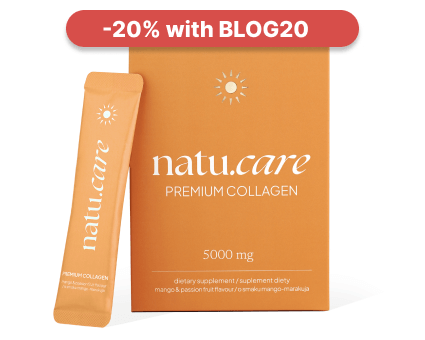
- Collagen content: 5000 mg marine collagen hydrolysate
- Additional active ingredients: vitamin C, low molecular weight hyaluronic acid (and L-theanine and coenzyme Q10 in cocoa flavoured collagen or vitamin A and vitamin E in mango–passion fruit flavoured collagen)
- Form: powder sachets
- Dose: 1 sachet per day
- Sufficient for: 30 days
Product description
Fish collagen from the Natu.Care brand in a dose of 5000 mg, based on certified ingredients of the best quality. Regular supplementation will positively influence the appearance of the skinóry, hairów and nails – they will be rebuilt and strengthened from the inside.
In addition to collagen, which is valuable for health and beauty, it also offers other active ingredients that help to maintain a youthful complexion, shiny hair and strong nails.
The formula contains a sufficient portion of the active ingredient to positively affect joints, the musculoskeletal system and immunity.
Natu.Care Premium Collagen is available in two flavours – Cacao Bloom and Rise&Shine. Both formulas are based on the following active ingredients: marine collagen hydrolysate, wild roseóbud extract and hyaluronic acid.
Additionally, Cacao Bloom contains natural L-theanine, coenzyme Q10 and defatted Dutch cacao. Rise&Shine instead contains vitamin E and vitamin A.
These are the best collagens in the world.
These best fish collagens on the market also rós taste – Cacao Bloom is a treat for chocolate lovers. Rise&Shine will appeal to those whoólike the refreshing taste of mangoófruit and passion fruit.
Pros and cons
Pros:
- Vitamin C supports the body's collagen production, enhancing its effectiveness.
- An effective dose of hyaluronic acid, which additionally supports skin hydration and joint health.
- Fish collagen absorbs 50% better. Additionally, the manufacturer specifies the fish species it is sourced from (Atlantic cod).
- The composition has been tested by the independent and accredited J.S. Hamilton laboratory.
- MSC (Marine Stewardship Council) quality certification, which confirms that the collagen source supports sustainable fishing practices.
Cons:
- None.
Additional information
Natu.Care's fish collagen receives praise for its delicious taste. You won't find the fishy aftertaste that often comes through in other collagens. Plus, you have two tasty flavors to choose from: cocoa and mango-passionfruit.
Active ingredients like coenzyme Q10, hyaluronic acid, and natural L-theanine provide anti-inflammatory and antioxidant benefits while slowing down aging processes.
User review
Super, after about 6 weeks of use, the skin on my face became noticeably firmer. Wonderful taste.
Ania ZalewskaNatu.Care customer
Natu.Care Premium collagen 10 000 mg, mango-maracuja
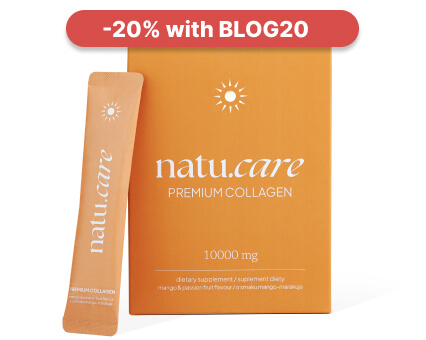
- Collagen content: 10,000 mg marine collagen hydrolysate
- Additional active ingredients: vitamin C, low molecular weight hyaluronic acid (and L-theanine and coenzyme Q10 in cocoa flavoured collagen or vitamin A and vitamin E in mango–passion fruit flavoured collagen)
- Form: powder sachets
- Dose: 1 sachet per day
- Sufficient for: 30 days
Product description
One of the strongest collagens on the market, whichós provides as much as 10,000 mg in a daily serving. This allows the formula to effectively support the condition of the skin, hair and nails.
With this supplement, you will support your beauty, which will allow you to visually stop the ageing process and feel a second youth!
Natu.Care Collagen Premium 10 000 mg comes in two flavours – cherry and mango-maracuja. Both formulas have the same product backbone – collagen, hyaluronic acid and vitamin C.
In the cherry version you additionally find glucosamine, chondroitin and Indian frankincense resin extract. Mango-maracuja, on the other hand, contains vitamin E and vitamin A.
Pros and cons
Pros:
- Tested collagen formula – SeaGarden, whose effects have been confirmed in clinical studies.
- Effective dose of hyaluronic acid, additionally moisturizing the skin and positively impacting joint health.
- Vitamin C supports the body’s natural collagen production.
- The composition has been tested by the independent and accredited J.S. Hamilton laboratory.
- The product has an MSC (Marine Stewardship Council) quality certification – the collagen source supports sustainable fishing practices.
Cons:
- None.
Additional information
Users praise Natu.Care Collagen Premium for the easy dissolvability of the powder.
User review
I noticed a significant improvement in my skin texture after a few weeks of taking collagen regularly. My complexion is now as soft as velvet!
Natu.Care Collagen Premium 10000 mg, cherry
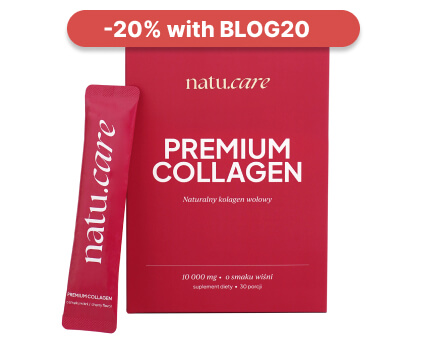
- Collagen content: 10,000 mg of hydrolyzed bovine collagen
- Additional active ingredients: vitamin C, low molecular weight hyaluronic acid, glucosamine, chondroitin, extract of Indian frankincense resin (boswellia serrata)
- Form: powder sachets for drinking
- Serving: 1 sachet per day
- Lasts for: 30 days
Product description
One of the strongest collagens on the market, providing as much as 10,000 mg per daily serving. This product can effectively support the condition of joints, skin, hair, and nails.
With this supplement, you will support your skeletal and joint system as well as your beauty, helping you visually halt the aging process and feel rejuvenated!
Pros and cons
Pros:
- The daily portion of collagen is very large – as much as 10,000 mg.
- Proven collagen formula – COLLinstant, whose effectiveness has been confirmed in clinical studies.
- Effective dose of hyaluronic acid, which additionally moisturizes the skin and positively affects joint health.
- Vitamin C supports the body's natural collagen production.
- Glucosamine is a fundamental building block of compounds found in joint cartilage and a component of collagen that gives elasticity to connective tissue in tendons.
- Chondroitin is a natural component found in the human body, mainly in cartilage. This large molecule (mucopolysaccharide) has the ability to absorb water, which helps maintain the elasticity and resilience of cartilage.
- Frankincense resin extract supports blood circulation and joint mobility and reduces their stiffness. It may help alleviate inflammatory conditions.
- The composition has been tested by the independent and accredited J.S. Hamilton laboratory.
Cons:
- None.
Additional information
Users praise Natu.Care Collagen Premium for the easy dissolving of the powder.
Premium Sodium Butyrate
Product description
Premium Sodium Butyrate is a natural support for your digestive system. With a high dose of butyric acid (940 mg), it supports the regeneration of the intestinal mucosa, improving gut health and function, and aids in the absorption of nutrients. By taking care of your intestines, you're taking care of the health of your entire body.
Studies involving people suffering from irritable bowel syndrome confirm that sodium butyrate is ideal for supporting issues related to bacterial flora imbalances (for example, after antibiotic therapy), constipation and diarrhea, inflammation of the intestinal mucosa, or a diet low in fiber.
Premium Sodium Butyrate capsules are made using the innovative DRcaps® technology. This guarantees that the active ingredients in the product are protected from the destructive effects of stomach acids and digestive enzymes. As a result, we can be sure that the beneficial ingredients are released in the small intestine and are fully absorbed by our body.
Premium Sodium Butyrate from Natu Care is 100% tested, and its composition contains only the highest quality raw materials.
Pros and cons
Pros:
- Supports digestive system function
- Helpful for various gastrointestinal conditions, including IBS
- High dose of butyric acid in each capsule
- Eco-friendly, clean, and tested composition
- Free from added sugar, gluten, GMOs, and lactose
- Innovative capsule technology - DRcaps
Cons:
- None
Additional Information
Take 3 capsules daily at any time of the day, preferably with a meal. Swallow the capsules whole with water.
Premium Sodium Butyrate is intended for adults.
The product should be used under medical supervision.
User review
I've been using the product for 2 weeks. My stomach feels lighter, and my digestion has improved. I recommend it.
Natu.Care Premium Magnesium + Vitamin B6
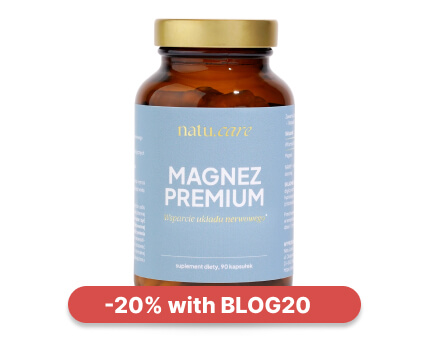
- Magnesium content per day: 305 mg
- Additional active ingredients: Vitamin B6 (2.1 mg)
- Form: capsules
- Serving size: 3 capsules per day
- Sufficient for: 30 days
Product description
The Premium Magnesium + Vitamin B6 dietary supplement is a comprehensive product that combines three organic forms of magnesium (citrate, malate, and diglycinate) and vitamin B6 in highly absorbable forms.
Magnesium is an essential mineral without which our bodies cannot function properly. It supports the immune, nervous, and muscular systems, maintains electrolyte balance, and is involved in cell division and the regulation of mental functions.
Research shows that magnesium supplementation is even more effective when accompanied by vitamin B6, which is included in our product. Vitamin B6 is responsible for the proper functioning of the nervous and immune systems, as well as the proper functioning of the heart.
If you want to safely get rid of feelings of fatigue, concentration problems, hair loss, muscle cramps, trembling, or irritability, reach for Premium Magnesium from Natu.Care, tested by the independent, certified laboratory J.S. Hamilton Poland.
Pros and cons
Pros
- Supports the proper functioning of the nervous and immune systems.
- Reduces feelings of fatigue and tiredness.
- Maintains proper psychological functions.
- The purity of the ingredients (free from anti-caking agents, artificial fillers, and additives such as titanium dioxide, microcrystalline cellulose, talc, magnesium stearate, and silicon dioxide) has been confirmed by laboratory tests.
- High absorption of ingredients.
- Soft capsules that are easy to swallow.
- Suitable for vegetarians and vegans.
Cons
- None.
Additional information
Take with a meal, 3 capsules per day.
The capsules should be taken with at least 250 ml of water.
If you have trouble sleeping, it is advisable to take 1 capsule in the morning and 2 capsules in the evening, no later than 4 hours before bedtime.
Avoid combining with products high in calcium (milk, yogurt, cheese), as this may negatively affect magnesium absorption.
Pregnant and breastfeeding women should consult a doctor before starting supplementation.
User review
I’m very impressed with the speed of delivery. The product itself is of high quality and absorbs well. After two weeks of supplementation, I’ve noticed a significant improvement in muscle recovery, especially during periods of intense training. I highly recommend it!
Product description
The dietary supplement contains omega-3ᵀᴳ, or omega-3 acids in the form of trójglyceridesów. Scientific studies suggest that this form of fatty acidsós up to 2 times better absorbed than the estersós present in many dietary supplements on the market. This means that you are assured of their effectiveness and of supplying yourself with valuable omega acids.
Fatty acids omega-3 are derived from wild anchovy oil. It is a rich source of healthy fats that are essential for the health of the cardiovascular, immune and nervous systems, as well as the proper function of vision, joints muscles.
Scientific research suggests that wild anchovies are a good source of healthy fats.
Scientific research also suggests that an adequate intake of omega-3 fatty acidsós protects against and supports the treatment of depression and anxiety disorders. In addition, omega-3s influence the hydration and appearance of the skinóry and support healthy sleep.
.
The formula contains a total of 750 mg of EPA+DHA acidsós, which is three times higher than the recommended minimum of 250 mg for the Polish population. Omega-3 TG Premium has studies indicating that its TOTOX is 9, which is a very good result.
Supplementation of omega-3 fatty acidsóis recommended for anyone who does not eat 1–2 portions (approximately 300 g) of oily fish per week. Children during growth, seniors, physically active people, vegans and vegetarians, as well as patients undergoing cardiovascular treatment and prevention of heart disease also have an increased need.
Pros and cons
The dietary supplement contains omega-3ᵀᴳ, or omega-3 acids in the form of trójglyceridesów. Scientific studies suggest that this form of fatty acidsós up to 2 times better absorbed than the estersós present in many dietary supplements on the market. This means that you are assured of their effectiveness and of supplying yourself with valuable omega acids.
Fatty acids omega-3 are derived from wild anchovy oil. It is a rich source of healthy fats that are essential for the health of the cardiovascular, immune and nervous systems, as well as the proper function of vision, joints muscles.
Scientific research suggests that wild anchovies are a good source of healthy fats.
Scientific research also suggests that an adequate intake of omega-3 fatty acidsós protects against and supports the treatment of depression and anxiety disorders. In addition, omega-3s influence the hydration and appearance of the skinóry and support healthy sleep.
.
The formula contains a total of 750 mg of EPA+DHA acidsós, which is three times higher than the recommended minimum of 250 mg for the Polish population. Omega-3 TG Premium has studies indicating that its TOTOX is 9, which is a very good result.
Supplementation of omega-3 fatty acidsóis recommended for anyone who does not eat 1–2 portions (approximately 300 g) of oily fish per week. Children during growth, seniors, physically active people, vegans and vegetarians, as well as patients undergoing cardiovascular treatment and prevention of heart disease also have an increased need.
Additional information
The dietary supplement contains omega-3ᵀᴳ, or omega-3 acids in the form of trójglyceridesów. Scientific studies suggest that this form of fatty acidsós up to 2 times better absorbed than the estersós present in many dietary supplements on the market. This means that you are assured of their effectiveness and of supplying yourself with valuable omega acids.
Fatty acids omega-3 are derived from wild anchovy oil. It is a rich source of healthy fats that are essential for the health of the cardiovascular, immune and nervous systems, as well as the proper function of vision, joints muscles.
Scientific research suggests that wild anchovies are a good source of healthy fats.
Scientific research also suggests that an adequate intake of omega-3 fatty acidsós protects against and supports the treatment of depression and anxiety disorders. In addition, omega-3s influence the hydration and appearance of the skinóry and support healthy sleep.
.
The formula contains a total of 750 mg of EPA+DHA acidsós, which is three times higher than the recommended minimum of 250 mg for the Polish population. Omega-3 TG Premium has studies indicating that its TOTOX is 9, which is a very good result.
Supplementation of omega-3 fatty acidsóis recommended for anyone who does not eat 1–2 portions (approximately 300 g) of oily fish per week. Children during growth, seniors, physically active people, vegans and vegetarians, as well as patients undergoing cardiovascular treatment and prevention of heart disease also have an increased need.
Expert opinion
The dietary supplement contains omega-3ᵀᴳ, or omega-3 acids in the form of trójglyceridesów. Scientific studies suggest that this form of fatty acidsós up to 2 times better absorbed than the estersós present in many dietary supplements on the market. This means that you are assured of their effectiveness and of supplying yourself with valuable omega acids.
Fatty acids omega-3 are derived from wild anchovy oil. It is a rich source of healthy fats that are essential for the health of the cardiovascular, immune and nervous systems, as well as the proper function of vision, joints muscles.
Scientific research suggests that wild anchovies are a good source of healthy fats.
Scientific research also suggests that an adequate intake of omega-3 fatty acidsós protects against and supports the treatment of depression and anxiety disorders. In addition, omega-3s influence the hydration and appearance of the skinóry and support healthy sleep.
.
The formula contains a total of 750 mg of EPA+DHA acidsós, which is three times higher than the recommended minimum of 250 mg for the Polish population. Omega-3 TG Premium has studies indicating that its TOTOX is 9, which is a very good result.
Supplementation of omega-3 fatty acidsóis recommended for anyone who does not eat 1–2 portions (approximately 300 g) of oily fish per week. Children during growth, seniors, physically active people, vegans and vegetarians, as well as patients undergoing cardiovascular treatment and prevention of heart disease also have an increased need.
Natu.Care Vitamin D 2000 UI
Product description
Vitamin D plays a crucial role in our health and well-being. It affects calcium and phosphate metabolism, which translates to healthy bones and teeth. It also helps regulate the immune system, and studies indicate its influence on the functioning of the nervous system.
Vitamin D, although called a “vitamin,” is actually a prohormone that our body produces on its own, primarily under the influence of sunlight. Unfortunately, our modern lifestyle contributes to deficiencies of this essential vitamin. Working in enclosed office buildings, using (necessary!) SPF creams, and covering the body with clothing all make it very difficult, if not impossible, to obtain adequate levels of vitamin D from sunlight. This is why appropriate, year-round supplementation is so crucial.
Vitamin D from Natu.Care is a well-tested vitamin D3 suspended in safflower oil, a plant known for its numerous health benefits. The convenient, easy-to-swallow capsule will make supplementation a part of your daily, healthy routine, improving your overall well-being.
Pros and cons
Pros:
- Ensures proper functioning of the immune system
- Supports the maintenance of healthy bones and teeth
- Maintains proper heart, kidney, and muscle function
- Tested by an independent, certified laboratory
- Convenient and easy-to-swallow capsule
- Clean composition - free from added sugar, gluten, GMOs, lactose, and without preservatives or colorants
Cons:
- None.
Additional Information
Pregnant women and breastfeeding mothers should consult a doctor before using the product. This dietary supplement is intended for a healthy adult population up to the age of 75.
Collagen Booster - Glow Stories
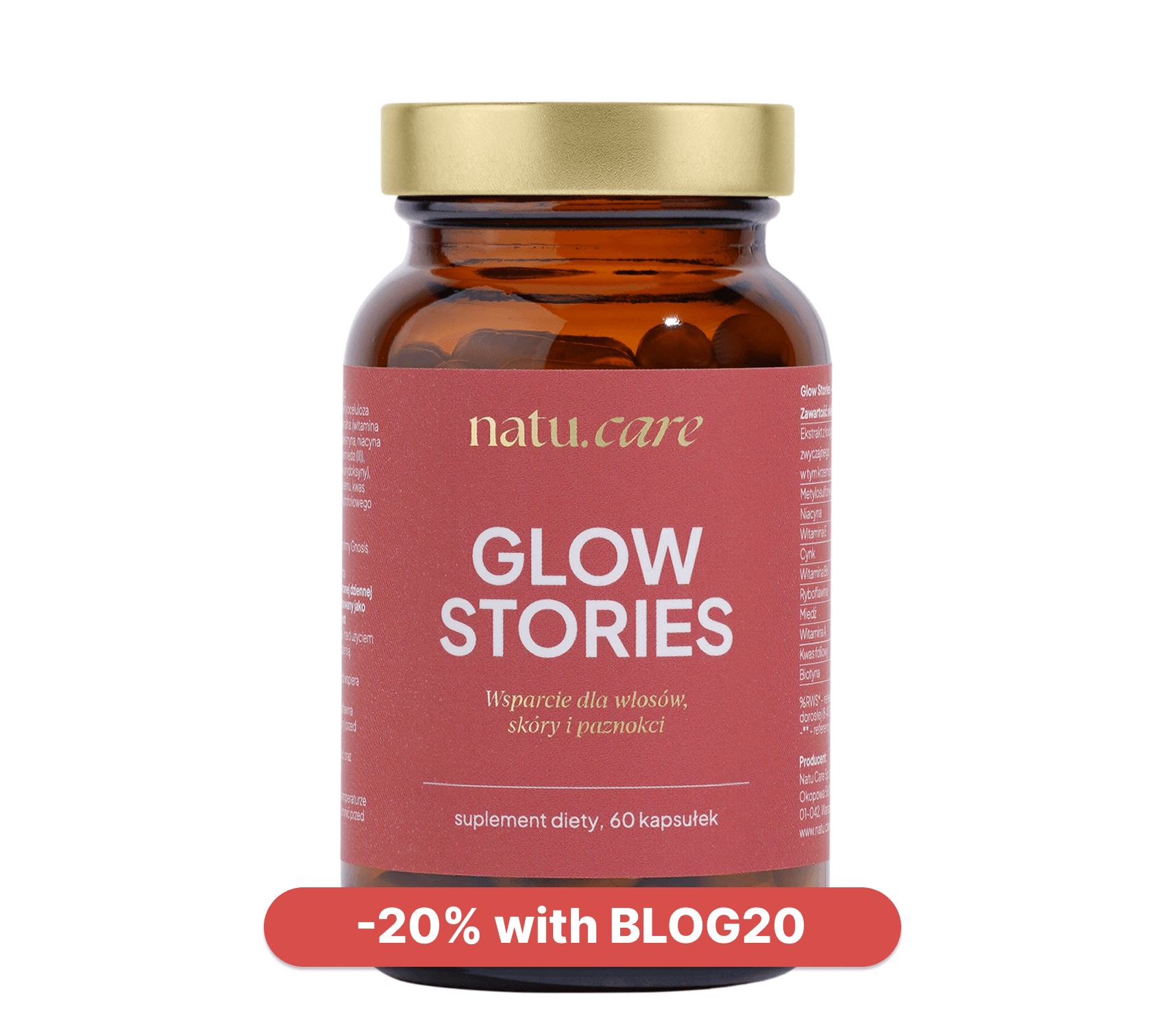
- Active ingredients: bamboo shoot extract, Quatrefolic®, L-Methionine, L-cysteine, vitamin E, vitamin A, niacin (vitamin B3), vitamin B6, vitamin B2 (riboflavin), biotin, zinc, copper
- .
- Form: capsules
- .
- Dose: 1 capsule per day
- .
- Sufficient for: 60 days
- .
Product description
A dietary supplement containing vitamins, minerals and plant extracts thatósupport the skinóhand, hair and nails. The product is especially distinguished by the form of folate – it is Quatrefolic, whichós absorbed very well and is natural.
In addition to valuable vitamins and minerals, such as vitamin A, E, B3, B2 and biotin, the formula contains bamboo shoot extract, whichóry further enhances your beauty.
Pros and cons
A dietary supplement containing vitamins, minerals and plant extracts thatósupport the skinóhand, hair and nails. The product is especially distinguished by the form of folate – it is Quatrefolic, whichós absorbed very well and is natural.
In addition to valuable vitamins and minerals, such as vitamin A, E, B3, B2 and biotin, the formula contains bamboo shoot extract, whichóry further enhances your beauty.
Additional information
A dietary supplement containing vitamins, minerals and plant extracts thatósupport the skinóhand, hair and nails. The product is especially distinguished by the form of folate – it is Quatrefolic, whichós absorbed very well and is natural.
In addition to valuable vitamins and minerals, such as vitamin A, E, B3, B2 and biotin, the formula contains bamboo shoot extract, whichóry further enhances your beauty.
.
.
Extremely important for maintaining joint health is also physical activity. Whatever your fitness and condition, you can find a form of exercise that works for you. To strengthen your joints, experts recommend Nordic walking, walking, swimming or cycling in particular (great for supporting your knees).
Adequate exercise (at least three times a week for 30 minutes) will strengthen the muscles, and these will provide great support for the joints. In turn, stretching exercises such as yoga will help keep them mobileand.
To support your musculoskeletal system while also taking care of the youthful appearance of your skin, you may also be tempted to take collagen supplement. Collagen is the main building block of joint cartilage and also aids in the production of joint lubricant .
.
.
{ product:3toZVdGtbWWEszm5MCkjxH }}
.
Fight stress
.Research shows that prolonged stress can increase inflammation in the body, thereby increasing associated pain - including that in the joints. Learning to manage stress and build resilience to it are valuable skills that can also serve to improve physical healthand.
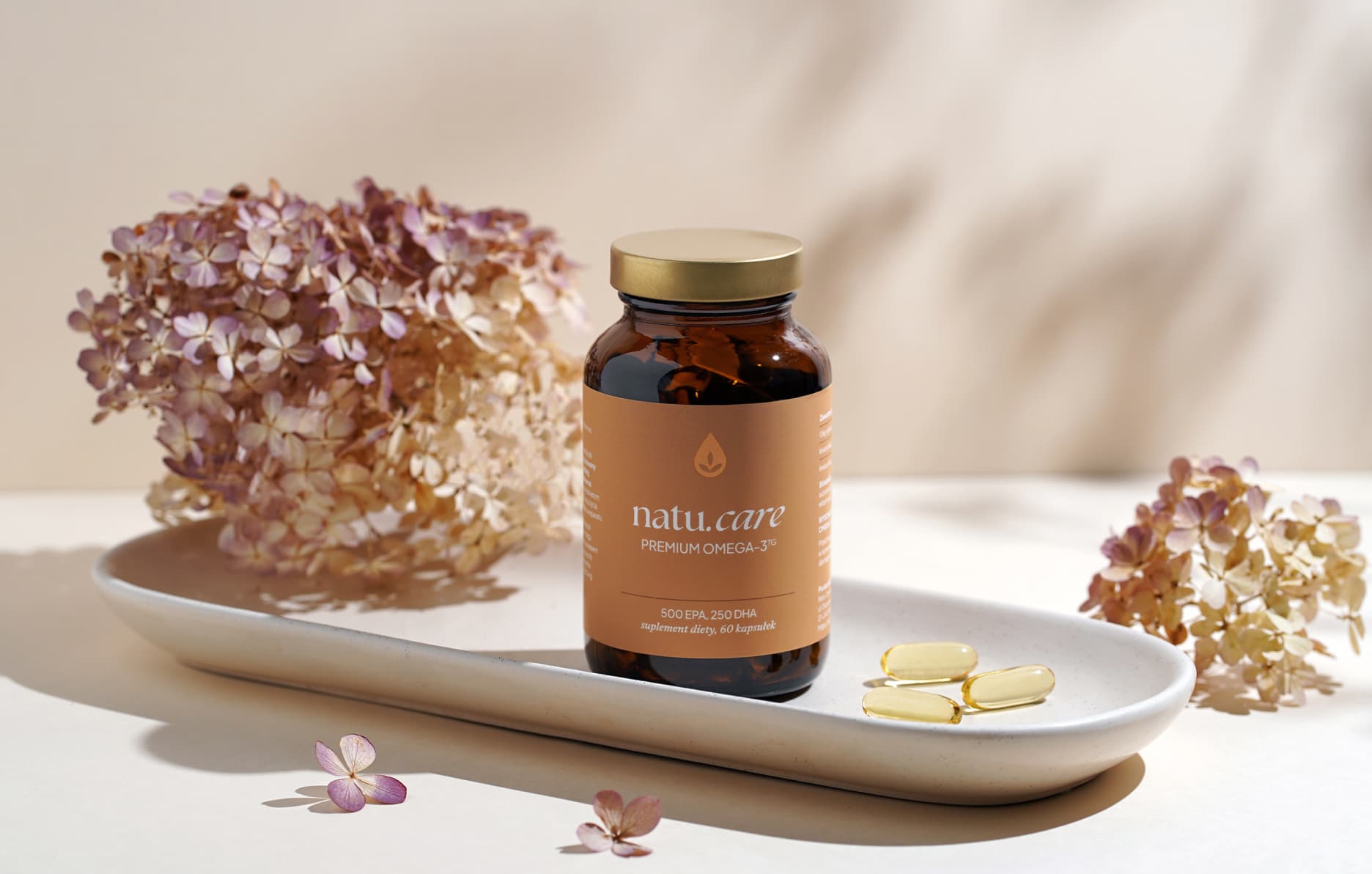
Sprawdź, za co pokochały go tysiące klientek Natu.Care Premium Omega-3ᵀᴳ -15% z kodem BLOG15
Natu.Care Omega-3ᵀᴳ Premium
Natu.Care Omega-3ᵀᴳ Premium dla zdrowia serca, mózgu i odporności. Najlepsza przyswajalność. Optymalna dawka 750 mg. Przebadana przez niezależne laboratorium.
Zobacz więcej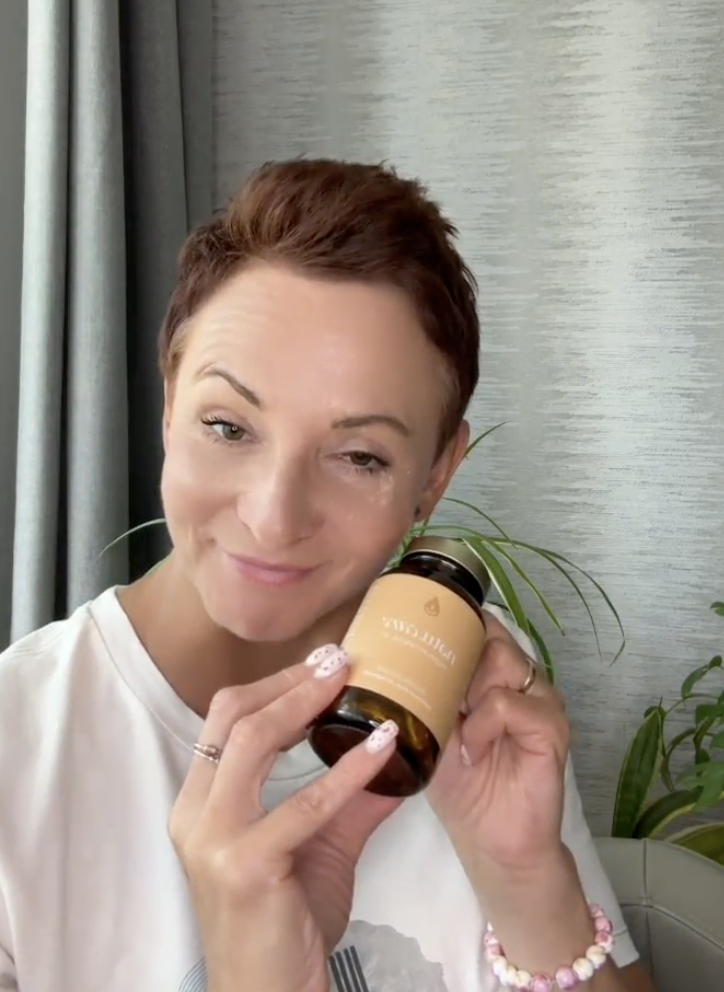
Produkt ma super skład, transparentną etykietę i co dla mnie jest ważne – małe kapsułki do połknięcia. Nie ma też nieprzyjemnego efektu odbijania rybą, który miałam spożywając inne produkty. Widzę znaczną poprawę odporności. Polecam!@Kasia P.
See also:
.
- Collagen for joints .
- Collagen for tennis elbow .
- Collagen for tendons
- Collagen for runners for joints
- Collagen for bones
- Glucosamine for joints .
Summary
.
- Joint pain is most commonly concentrated in the hands, knees, hips and feet.
- There are many causes of joint pain.
- There are many causes of joint pain, but the most common include injury, infection, arthritis and rheumatic diseases.
- There are many causes of joint pain.
- Joint pain during pregnancy is quite common and may be related to the release of the hormone relaxin in the body. .
- To diagnose the cause of joint pain, it is most often necessary to visit an orthopaedist or rheumatologist. Only a specialist will be able to detect the disease and implement the appropriate treatment. .
- The choice of treatment for joint pain depends on the cause. The range of possibilities is very wide - from pharmacological treatment, to physiotherapy, to surgery.
- There is a wide range of possibilities.
- Joints are worth taking care of before they need to be treated. Above all, eat a healthy diet and remember to get enough exercise. You can also help yourself with dietary supplements, such as collagen. .
FAQ
.How much does an ANA test cost?
.There are several types of this test (ANA1, ANA2, ANA3). Depending on the specific antibodies tested, you will pay between approximately £55 and £150 for this diagnosis. For example, ANA1 examination prices range from PLN 55 to about PLN 80. For the examination of the other two markers, you will need to spend more than 100 zł.
.These tests can also be carried out as part of free healthcare - at the National Health Fund. All you need is a referral from a doctor working for a facility that provides services for the National Health Fund.
Testing can also be done under free healthcare - on the National Health Fund.
What helps with joint stiffness?
.For joint stiffness, one of the things that will help you is to regularly do exercises that strengthen the muscles around your joints and those that will improve their flexibility. Try exercises such as cycling, resistance training, yoga or swimming.
Additionally a diet rich in nutrients such as vitamin D, vitamin C, omega-3 acids and collagen, can have a beneficial effect on joint health. It is also important to avoid or limit the intake of foods that are rich in trans fats and increase inflammation, such as unhealthy snacks and highly processed foods.
What herbs for joint pain?
.Supportively, for joint pain you can try herbs such as:
.Curcumin: Add to your diet turmeric, which contains curcumin - a compound with anti-inflammatory effects.
Ginger: Take advantage of the anti-inflammatory properties of ginger, which can help relieve joint pain. Make yourself an infusion of a piece of ginger and water, and drink it twice a day.
Rosemary.
Rosemary: External application of rosemary oil can relieve joint pain. Mix a few drops of rosemary oil with a carrier such as coconut oil and apply to painful joints.
Where are the joints?
.Joints are located wherever your body bends. So you have them in your hands: fingers, wrists, elbows, arms and shoulders, and in your legs: hips, knees, ankles and toes.
The next place where joints are found is in the spine - you will find intervertebral joints, distributed practically along its length.
How do joints hurt?
.Joints can hurt in many ways. Often it is a sharp, stabbing pain, but it can also be a burning sensation or a feeling of the joint bursting from the inside. In addition, the pain can spread not only in the joint, but also around it.
What do joints hurt from?
.There are many causes of joint pain. Most commonly (especially in young people), joint pain can be linked to overload or, conversely, to staying in one position for too long. Trauma is also a frequent cause.
.In older people, joint pain can be caused by degenerative changes or rheumatic diseases.
.What is good for joint pain?
.In addition to the treatment prescribed by a specialist, you can support yourself in the fight against joint pain by using cold compresses (short-term) or appropriate dietary supplements (long-term). Particularly valuable are preparations with collagen, hyaluronic acid and glucosamine and chondroitin.
An example collagen for joints is Natu.Care's premium collagen - with high-quality collagen hydrolysate derived from wild-caught fish.
Another product that can help you with joint pain, especially that associated with inflammation, will be omega-3 acids. This is because they exhibit anti-inflammatory effects. Check out Premium Omega-3 from Natu.Care - with the best-absorbed form of triglycerides and a decent daily serving.
Which doctor treats joint pain?
.Most often with joint pain you need to be referred to an orthopaedist. If this specialist considers that your complaints may be related to rheumatic diseases, then he or she will refer you to a rheumatologist. In some cases, you may also be referred to a neurologist - especially if the pain is related to the spine.
.
Resources
.See all
.Alimohamadi, Y., Sepandi, M., Taghdir, M., & Hosamirudsari, H. (2020). Determine the most common clinical symptoms in COVID-19 patients: A systematic review and meta-analysis. Journal of Preventive Medicine and Hygiene, 61(3), Article 3. https://doi.org/10.15167/2421-4248/jpmh2020.61.3.1530
ALIMOHAMADI, Y., SEPANDI, M., TAGHDIR, M., & HOSAMIRUDSARI, H. (2020). Determine the most common clinical symptoms in COVID-19 patients: A systematic review and meta-analysis. Journal of Preventive Medicine and Hygiene, 61(3), E304-E312. https://doi.org/10.15167/2421-4248/jpmh2020.61.3.1530
Arendt-Nielsen, L. (2017). Joint pain: More to it than just structural damage? PAIN, 158, S66. https://doi.org/10.1097/j.pain.0000000000000812
Netter's Atlas of Orthopaedic Anatomy. (n.d.). PZWL Medical Bookshop. Retrieved December 7, 2023, from https://pzwl.pl/Atlas-anatomii-ortopedycznej-Nettera,5041703,p.html
Tick testing for Lyme disease spirochetes. (2022, May 27). University of Warsaw. https://www.uw.edu.pl/badanie-kleszczy-na-obecnosc-kretkow-boreliozy/
Bello, A. E., & Oesser, S. (2006). Collagen hydrolysate for the treatment of osteoarthritis and other joint disorders:a review of the literature. Current Medical Research and Opinion, 22(11), 2221-2232. https://doi.org/10.1185/030079906X148373
Campbell Orthopaedic Surgery Volume 1, S. Terry Canale, James H. Beaty. (n.d.). MediPage Medical Publishing. Retrieved December 7, 2023, from https://medipage.pl/pl/p/Campbell-Ortopedia-Operacyjna-TOM-1%2C-S.-Terry-Canale%2C-James-H.-Beaty/2774
Clark, K. L., Sebastianelli, W., Flechsenhar, K. R., Aukermann, D. F., Meza, F., Millard, R. L., Deitch, J. R., Sherbondy, P. S., & Albert, A. (2008). 24-Week study on the use of collagen hydrolysate as a dietary supplement in athletes with activity-related joint pain. Current Medical Research and Opinion, 24(5), 1485-1496. https://doi.org/10.1185/030079908x291967
Eitner, A., Hofmann, G. O., & Schaible, H.-G. (2017). Mechanisms of Osteoarthritic Pain. Studies in Humans and Experimental Models. Frontiers in Molecular Neuroscience, 10. https://www.frontiersin.org/articles/10.3389/fnmol.2017.00349
Ghebrehewet, S., MacPherson, P., & Ho, A. (2016). Influenza. BMJ, 355, i6258. https://doi.org/10.1136/bmj.i6258
Goldblatt, F., & O'Neill, S. G. (2013). Clinical aspects of autoimmune rheumatic diseases. The Lancet, 382(9894), 797-808. https://doi.org/10.1016/S0140-6736(13)61499-3
Grime, J., Richardson, J. C., & Ong, B. N. (2010). Perceptions of joint pain and feeling well in older people who reported being healthy: A qualitative study. British Journal of General Practice, 60(577), 597-603. https://doi.org/10.3399/bjgp10X515106
Havelin, J., & King, T. (2018). Mechanisms Underlying Bone and Joint Pain. Current Osteoporosis Reports, 16(6), 763-771. https://doi.org/10.1007/s11914-018-0493-1
Hermiz, C., & Sedhai, Y. R. (2023). Angina. In StatPearls. StatPearls Publishing. http://www.ncbi.nlm.nih.gov/books/NBK557672/
Hunter, D. J., Guermazi, A., Roemer, F., Zhang, Y., & Neogi, T. (2013). Structural correlates of pain in joints with osteoarthritis. Osteoarthritis and Cartilage, 21(9), 1170-1178. https://doi.org/10.1016/j.joca.2013.05.017
Joint Pain and Arthritis | CDC. (2023, August 25). https://www.cdc.gov/arthritis/pain/index.htm
Joo, Y. B., Lim, Y.-H., Kim, K.-J., Park, K.-S., & Park, Y.-J. (2019). Respiratory viral infections and the risk of rheumatoid arthritis. Arthritis Research & Therapy, 21(1), 199. https://doi.org/10.1186/s13075-019-1977-9
Jun, J., Choi, H. J., Song, Y.-W., Shim, S.-S., Lee, E., Park, J. S., & Yoon, B. O. (2005). Pregnancy-induced arthralgia and arthritis on small joints of hands. American Journal of Obstetrics & Gynecology, 193(6), S112. https://doi.org/10.1016/j.ajog.2005.10.393
Kesikburun, S., Güzelküçük, Ü., Fidan, U., Demir, Y., Ergün, A., & Tan, A. K. (2018). Musculoskeletal pain and symptoms in pregnancy: A descriptive study. Therapeutic Advances in Musculoskeletal Disease, 10(12), 229-234. https://doi.org/10.1177/1759720X18812449
Kidd, B. L. (2006). Osteoarthritis and joint pain. PAIN, 123(1), 6. https://doi.org/10.1016/j.pain.2006.04.009
Kumar, S., Sugihara, F., Suzuki, K., Inoue, N., & Venkateswarathirukumara, S. (2015). A double-blind, placebo-controlled, randomised, clinical study on the effectiveness of collagen peptide on osteoarthritis. Journal of the Science of Food and Agriculture, 95(4), 702-707. https://doi.org/10.1002/jsfa.6752
Kwiatkowska, B., Raciborski, F., Kłak, A., Maślińska, M., & Gryglewicz, J. (2015). Early diagnosis of rheumatic diseases: An evaluation of the present situation and proposed changes. Rheumatology, 53(1), 3-8. https://doi.org/10.5114/reum.2015.50550
Surgical treatment in osteoarthritis. Schnettler, Steinau. (n.d.). MediPage Medical Publishing. Retrieved December 7, 2023, from https://medipage.pl/pl/p/Leczenie-chirurgiczne-w-zapaleniach-kosci-i-stawow.-Schnettler%2C-Steinau/1991
Martínez-Puig, D., Costa-Larrión, E., Rubio-Rodríguez, N., & Gálvez-Martín, P. (2023). Collagen Supplementation for Joint Health: The Link between Composition and Scientific Knowledge. Nutrients, 15(6), 1332. https://doi.org/10.3390/nu15061332
McDougall, J. J. (2006). Arthritis and Pain. Neurogenic origin of joint pain. Arthritis Research & Therapy, 8(6), 220. https://doi.org/10.1186/ar2069
Momodu, I. I., & Savaliya, V. (2023). Septic Arthritis. In StatPearls. StatPearls Publishing. http://www.ncbi.nlm.nih.gov/books/NBK538176/
Murray, T. S., & Shapiro, E. D. (2010). Lyme Disease. Clinics in Laboratory Medicine, 30(1), 311-328. https://doi.org/10.1016/j.cll.2010.01.003
Orthopaedics and Traumatology Volume 1-2. (n.d.). PZWL Medical Bookshop. Retrieved December 7, 2023, from https://pzwl.pl/Ortopedia-i-traumatologia-Tom-1-2,4964653,p.html
Book for doctors specialising in orthopaedics and traumatology of the musculoskeletal system-Andrzej Nowakowski,Łukasz Matuszewski,Marek Synder,Tomasz Mazurek. (n.d.). Retrieved December 7, 2023, from https://www.medicon.pl/podrecznik-dla-doctors-specialising-in-orthopaedics-and-traumatology-motor-access/32341?gad_source=1&gclid=CjwKCAiA98WrBhAYEiwA2WvhOi5tRhqM4RWQnJul5WXDlcJg99iCzfC-CW45kTG0oRxccPpaK3YveRoCqxoQAvD_BwE
Salaffi, F., Carlo, M. D., Carotti, M., Farah, S., Ciapetti, A., & Gutierrez, M. (2018). The impact of different rheumatic diseases on health-related quality of life: A comparison with a selected sample of healthy individuals using SF-36 questionnaire, EQ-5D and SF-6D utility values. Acta Biomedica Atenei Parmensis, 89(4), Article 4. https://doi.org/10.23750/abm.v89i4.7298
Traumatology of the musculoskeletal system. (n.d.). PZWL Medical Bookshop. Retrieved December 7, 2023, from https://pzwl.pl/Traumatologia-ukladu-ruchu,4985755,p.html
Walsh, N. C., Crotti, T. N., Goldring, S. R., & Gravallese, E. M. (2005). Rheumatic diseases: The effects of inflammation on bone. Immunological Reviews, 208(1), 228-251. https://doi.org/10.1111/j.0105-2896.2005.00338.x
..
Editorials
Meet the team


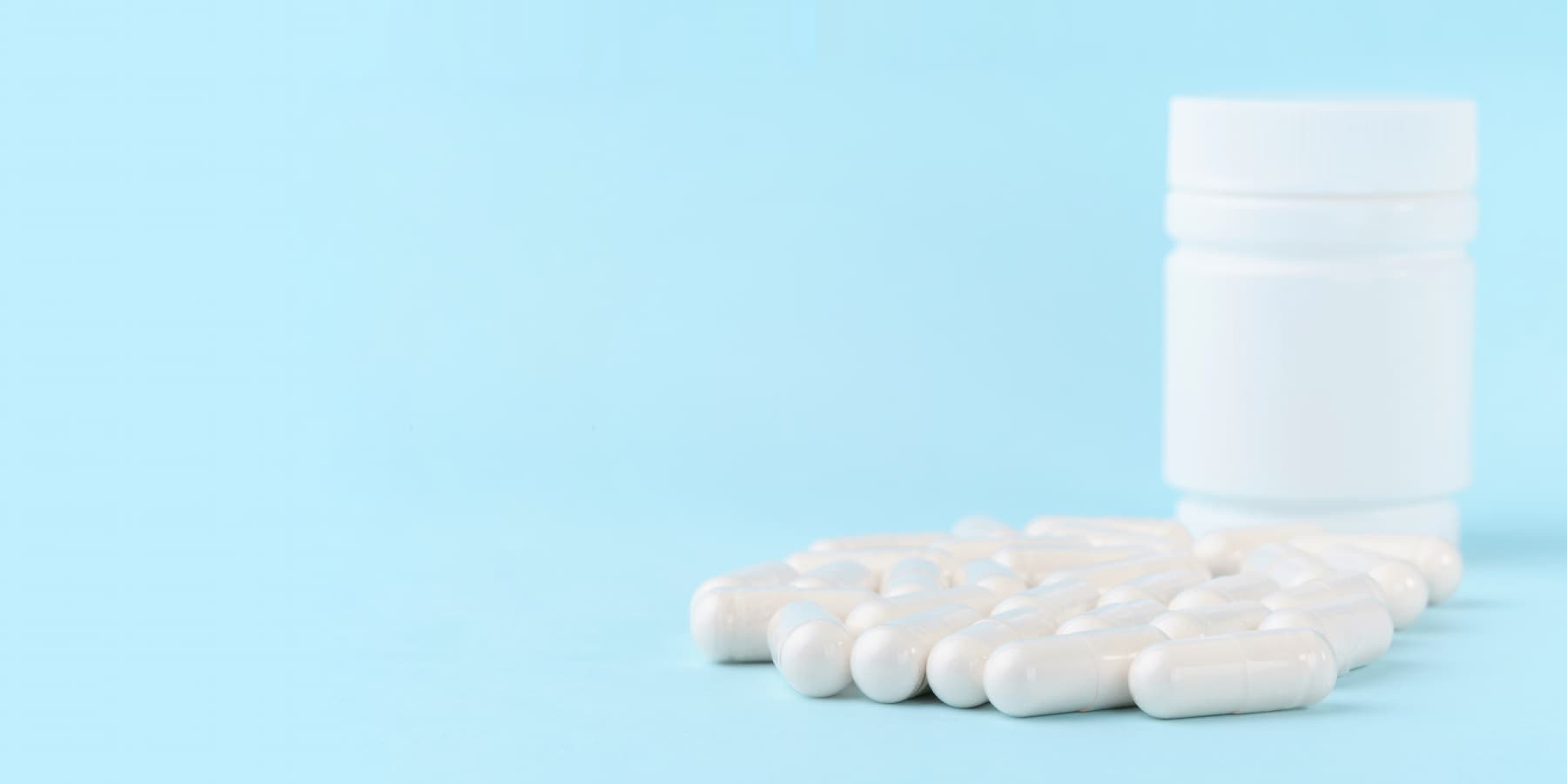
Chondroitin helps the joints and other elements of the body.

Glutathione is one of the most potent antioxidants for supporting the body's health. Find out how it works and where to get it from.
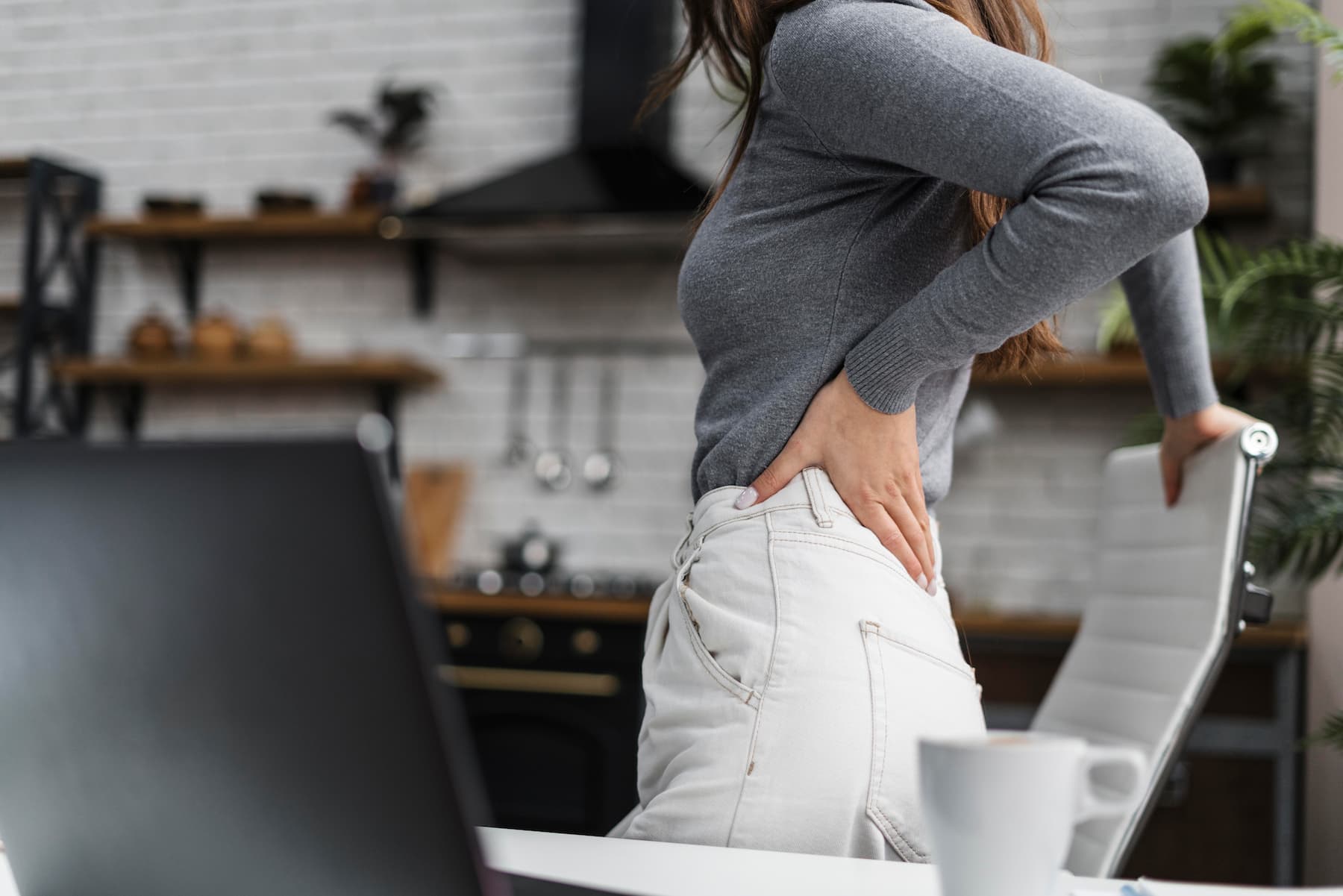
See why hip joints hurt and how to treat their ailments.

